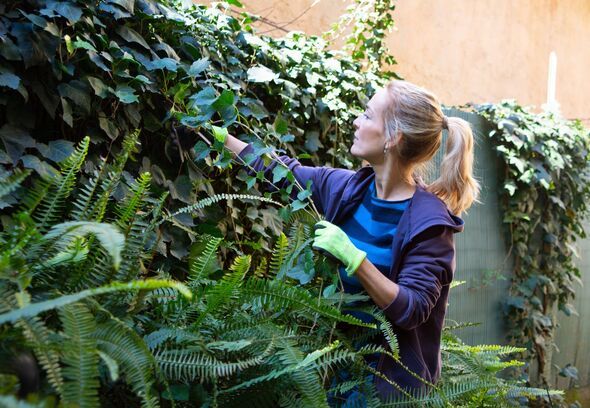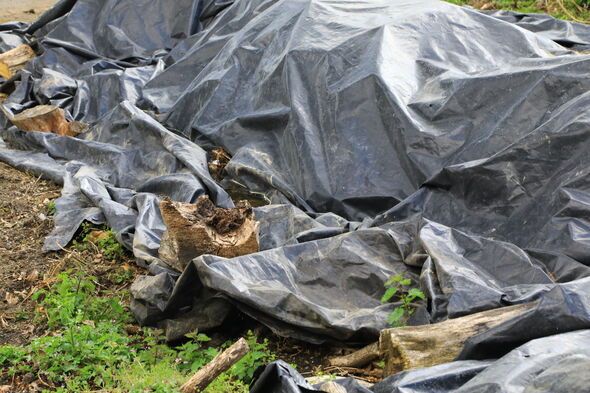
English ivy plants make for an attractive way of adding year-round interest to walls and fences, especially in shade. However, its vigorous nature means it can quickly grow out of bounds, often making it classed as weeds. Ivy is a vigorous, evergreen climber that can grow to 30m. Its purple-green stems become woody with age and produce aerial roots, allowing it to attach to walls, fixtures and fences, along with natural surfaces such as trees and lawns.
Taking to her home and gardening blog Hammer & Headband, Tara Besore has shared her experience of removing ivy plants from her garden. She said: "Stopping it [ivy] seemed impossible, but eventually I got rid of every last ivy root and vine in my yard. Here's what you need to know to remove English ivy for good."
She noted that there are three main ivy removal methods people use, depending on how thick and serious the ivy is - cutting and pulling up ivy, spraying herbicides and solarisation. However, she only found one of them to be effective.
She shared that the third option was her "method of choice", claiming that solarisation "works on even the thickest ivy".
Tara said: "It doesn't strain your back, and it doesn't require chemicals. All it takes is patience." The only item you'll require for this method is thick black plastic sheeting.

She continued: "After spending a summer getting nowhere with brute force, I turned to the solarisation method. This involves letting the sun scorch the ivy under plastic."
For this method, start by completely covering your ivy with the plastic and stake it down or hold it in place with something heavy, like bricks.
So, how does this kill the ivy? Under the plastic, the ivy is deprived of water. Tara explained: "It cooks in the heat, permanently killing the ivy, the roots, and even the seeds so it can't grow back."
Every few months, peek under the plastic to check if the ivy is dead. Once all the greenery is gone and there's nothing but dry, brittle, brown vines, it's time to remove them for good.
After solarising, you can cut and pull the ivy with ease. Hack away at the vines and pile up the debris. There will be a lot.
Gardeners can also try mowing over the vines to break them apart and make them easier to pull up.
If you have any ivy growing up your trees, cut the ivy vines all around the base of each tree and remove the roots below.
Your biggest problem now is disposing of all that woody ivy. Don't just dump them on a compost or brush pile because they may re-root. Instead, take them to your local garden waste recycling centre.









